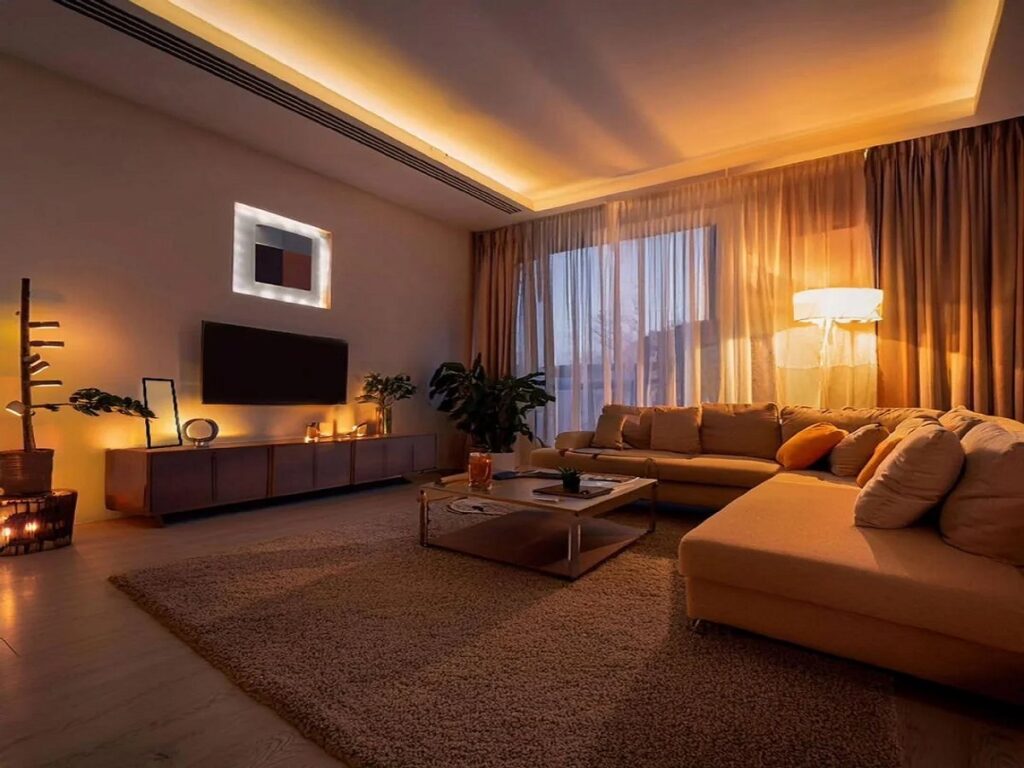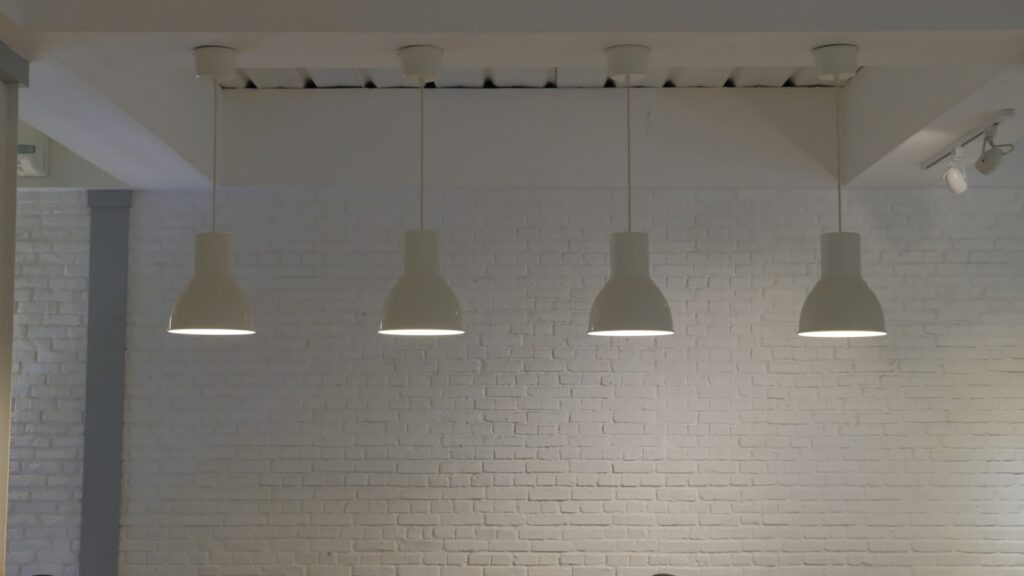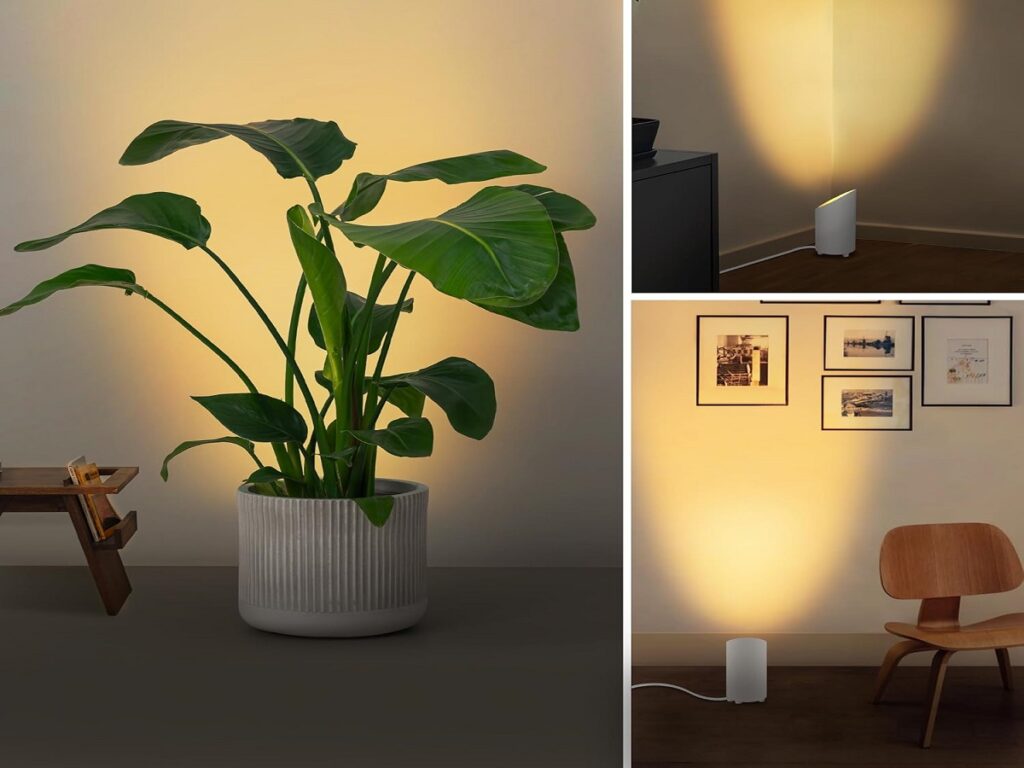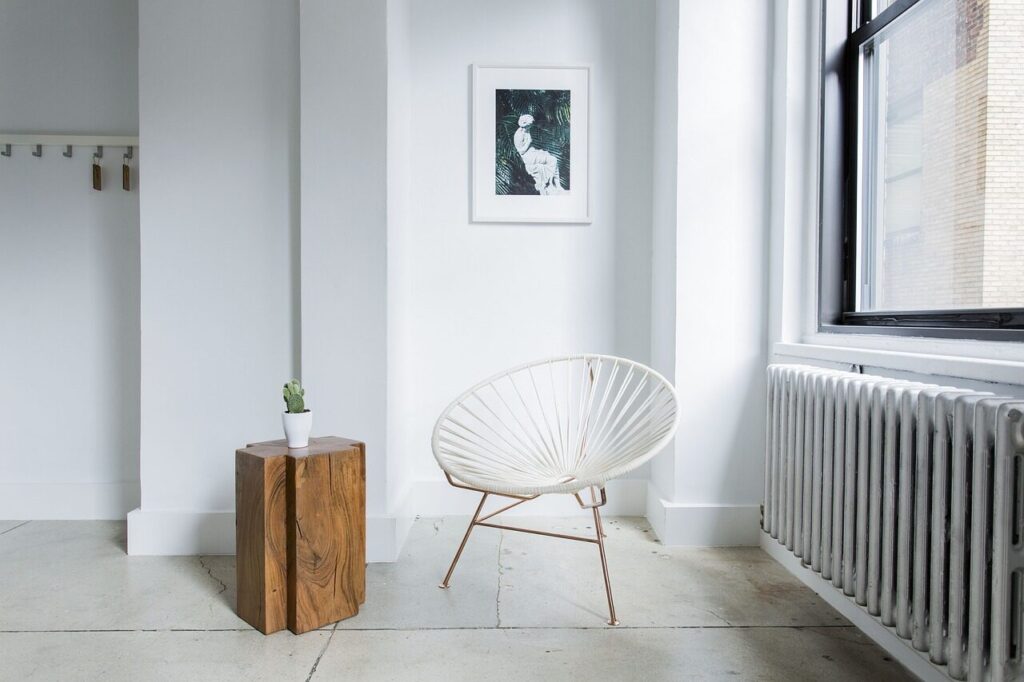Lighting sets the emotional tone and practical rhythm of a home, influencing how people transition through familiar spaces. Even residences built decades ago can feel renewed through thoughtful illumination that reduces shadows, softens glare, and balances brightness. Rather than relying on major renovations, homeowners can use deliberate lighting choices to nurture warmth and clarity. When layered with intention, lighting elevates daily comfort, enhances visual ease, and supports a more restorative environment for modern living. This mindful layering helps every room function smoothly.
1. Layered Ambient Lighting

Homes built before 2010 often depend on a single central fixture, leaving corners dim and visual flow uneven. Introducing layered ambient lighting using ceiling washes, soft pendants, and diffused wall glow creates a balanced foundation that feels gentle on the eyes. This approach enhances mood by reducing harsh contrast and allowing light to spread more naturally. By blending multiple sources, rooms feel calmer, more expansive, and able to transition smoothly from day to evening routines. This method also refreshes older layouts without renovation. It gently unifies circulation paths and supports daily comfort.
2. Task Lighting for Work Areas

Built-in desks and kitchen surfaces in homes from the early 2000s often lack targeted illumination, making tasks feel more tiring than necessary. Well-placed task lights such as under-cabinet strips, adjustable desk lamps, or focused pendants create clarity that improves both mood and efficiency. These solutions localize brightness only where needed, reducing strain and preventing shadows from interrupting work. Thoughtful task lighting anchors productivity zones and supports smoother daily routines. This added detail supports its practical value.
3. Warm-Tone Bulbs for Cozy Atmosphere

Many older homes were built with cool fluorescent lighting that can feel stark and uninviting. Replacing them with warm-tone LED bulbs creates a softer, more comforting environment that resembles natural dusk light. Warm hues encourage relaxation and help living rooms and bedrooms feel grounded. With options available in various wattages and vintages, homeowners can update fixtures without structural changes. This simple change transforms emotional tone and deepens the sense of refuge in everyday spaces. This added detail supports its practical value.
4. Accent Lighting to Highlight Features

Homes built in the 1990s and early 2000s often contain architectural details that fade into dimness. Accent lighting, such as picture lights, shelf LEDs, or small directionals, draws attention to textures, art, and structural lines that deserve visibility. This targeted brilliance enriches the mood by adding depth and visual interest. Rather than overwhelming a room, accent lighting introduces subtle highlights that inspire curiosity. It refreshes familiar interiors by celebrating what already exists. This added detail supports its practical value.
5. Natural Light Maximization

Many houses built before widespread open-plan designs include smaller windows that limit sunlight. Enhancing natural brightness through sheer curtains, reflective surfaces, or repositioned furniture transforms the mood instantly. Natural light supports circadian balance and reduces reliance on artificial sources during the day. By gently guiding sunlight deeper into the room, spaces feel larger, fresher, and more uplifting. Even modest adjustments make older homes feel newly invigorated and naturally aligned with daily rhythms. This added detail supports its practical value.
6. Dimmable Systems for Flexibility

Homes built over the last two decades often rely on fixed-brightness switches that restrict emotional versatility. Installing dimmers introduces customizable ambiance, allowing rooms to shift from vivid to calming with a simple adjustment. Whether enjoying evening relaxation or early-morning routines, dimmable lighting supports mood without altering fixtures themselves. This adaptability creates a gentle environment that evolves throughout the day. It gives homeowners better command over comfort and functional balance. This added detail supports its practical value.
7. Smart Lighting Integration

With many pre-smart-era homes built before 2015, modern lighting control offers a significant upgrade. Smart bulbs and automated scenes allow users to schedule brightness, shift color temperature, and create personalized moods with ease. These systems enhance both convenience and emotional comfort by adapting to daily routines. Whether brightening a kitchen at sunrise or dimming a bedroom in the evening, smart lighting supports seamless transitions. It modernizes traditional layouts without major remodeling. This added detail supports its practical value.
8. Outdoor Lighting for Safety and Mood

Many homes built in earlier decades included minimal exterior illumination, leaving paths dim and entries less inviting. Adding layered outdoor lighting such as walkway markers, porch sconces, or garden uplights improves both mood and safety. These lights expand usable space after sunset and create a welcoming glow that enhances curb appeal. By blending functional brightness with soft highlights, outdoor lighting transforms nightly routines. It supports comfort while strengthening the home’s overall sense of presence. This added detail supports its practical value.
9. Statement Fixtures for Character

In many older homes, original ceiling fixtures may feel outdated or overly plain. Replacing them with statement pieces such as sculptural pendants or refined chandeliers instantly updates the room’s personality. These fixtures provide both illumination and visual charm, completing the space with a sense of intention. Well-chosen statement lighting elevates mood by creating a focal point that feels expressive. It also ties together materials, colors, and textures for a more cohesive interior experience. This added detail supports its practical value.
Comments